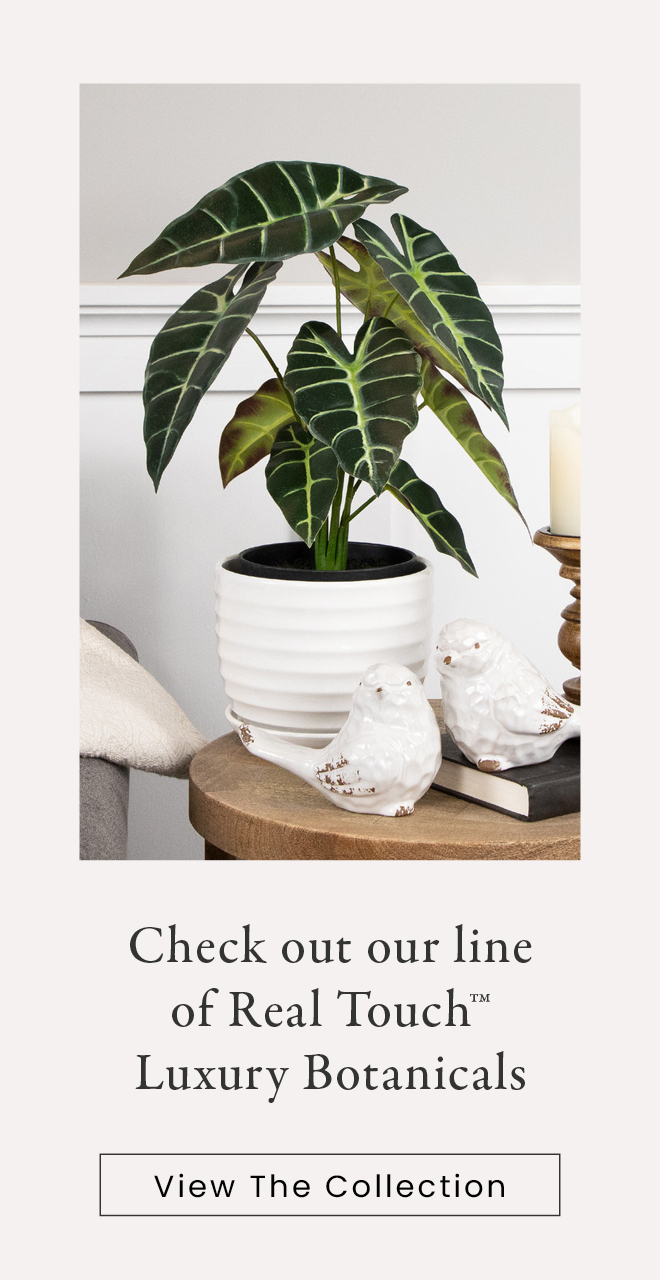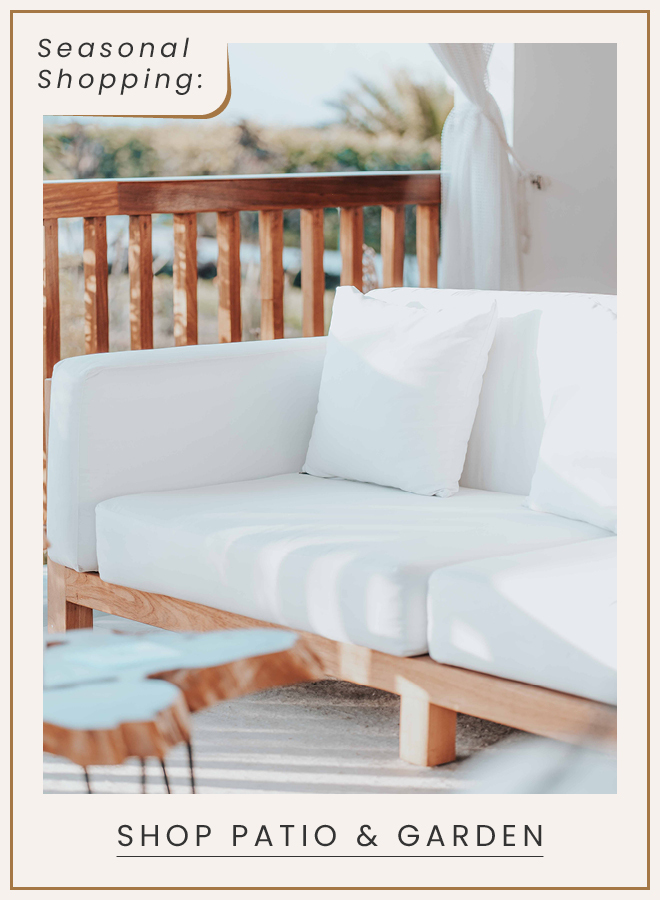Backyard Accessories That are for the Birds (But You’ll Like Them, Too!)
Mar 14th 2023
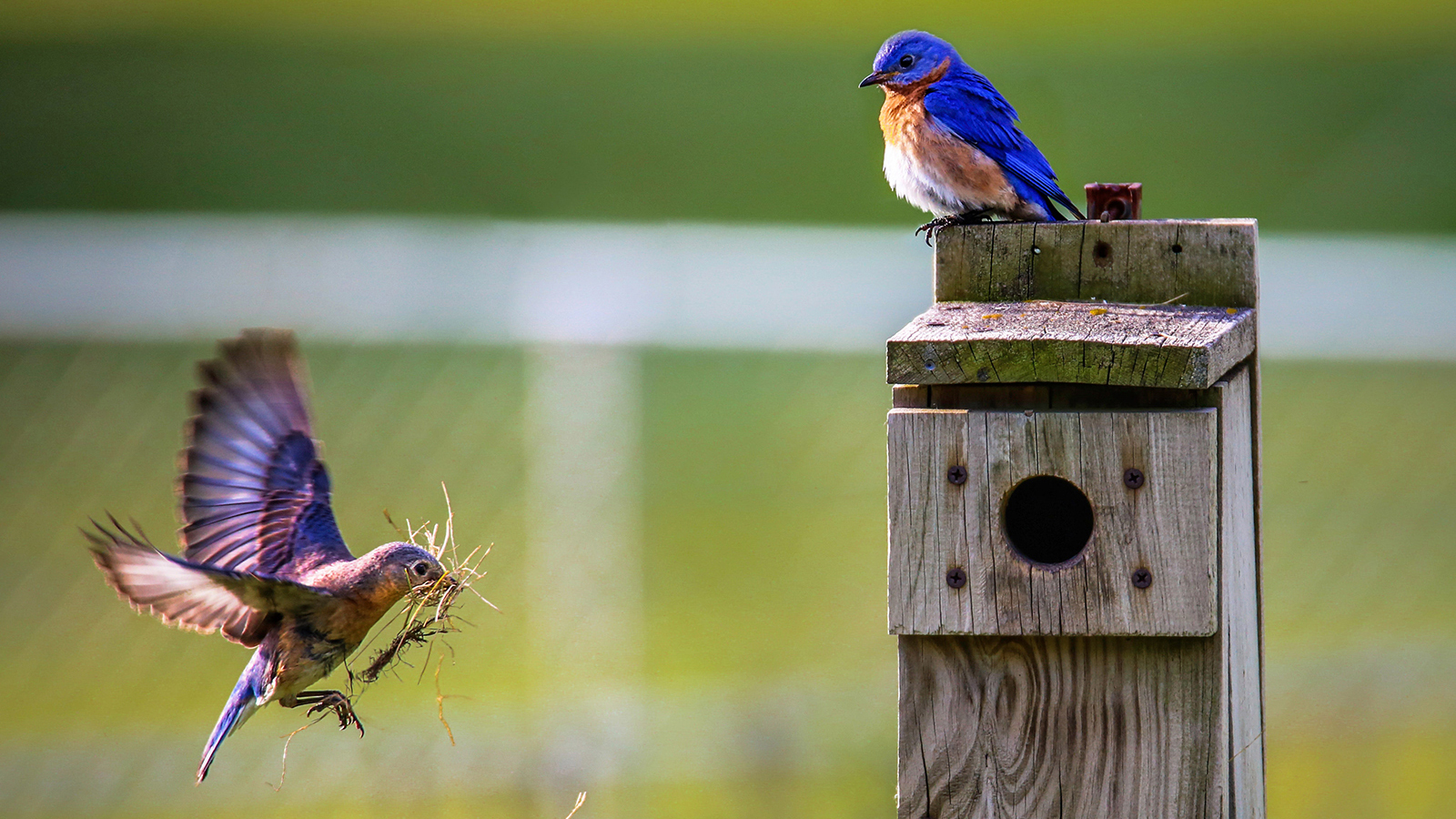
Spring does not come early here at Christmas Central. Still, we’ve already begun to notice a greater variety of birdsong in the morning.
If you get as excited as we do about spotting the first robin (or whatever migratory bird signals spring in your neck of the woods), you may be a bird watcher.
Other signs of being a birder: You can identify at least 10 different birds by their calls. You know the difference between a sparrow and a goldfinch. You want to make your yard hospitable to birds.
While bird watching is as easy as looking out your nearest window, there are ways to increase the likelihood that birds will visit your outdoor space regularly. Like your houseguests, three things make birds feel welcome: food, water and a comfortable place to sleep.
Let’s take a closer look at how to provide the basic amenities, plus ways to shape the natural environment that benefit your feathered friends.
Bird Feeders
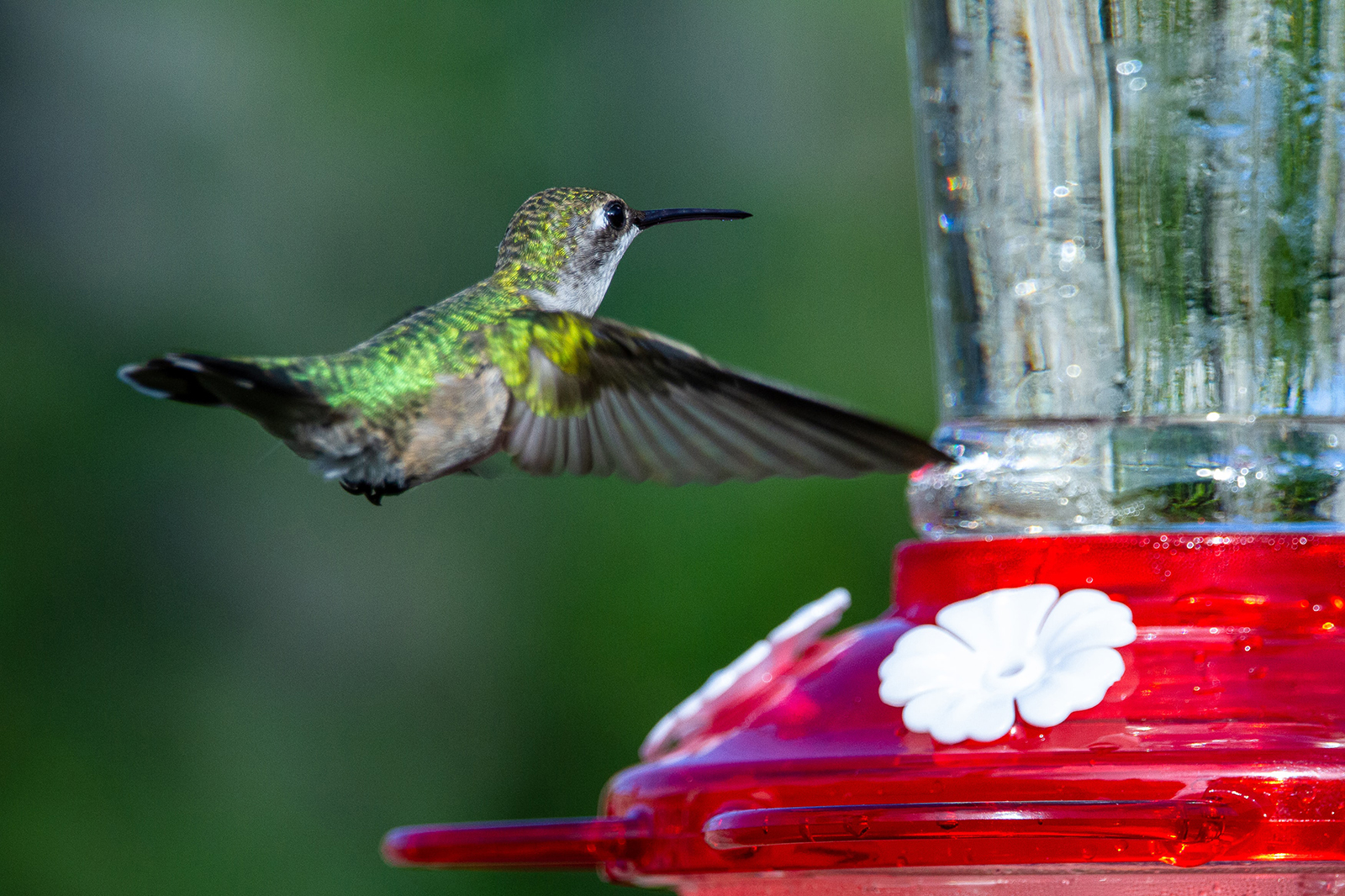
You could spread bird seed directly on the ground and the birds would be happy. However, that’s not the best solution for the birds or your yard.
Seed that’s lying on wet ground may rot and spoiled seed can make birds sick. The seed also can start to sprout, spreading weeds through your well manicured lawn and gardens. Bird seed also attracts nuisance wildlife, some of which can damage your expensive landscaping. These include mice, rats, squirrels, skunks, deer and bears.
A bird feeder is a better way to offer your birds a free meal. You can buy wild bird seed at many grocery stores, as well as in farm and feed stores, pet stores, home improvement stores, garden centers and, of course, on the internet. You also may have a wild bird specialty store in your neighborhood.
The bird seed aisle will likely offer a choice of several different seed varieties. While some birds aren’t picky eaters, others are more likely to come around if you offer their favorite foods. If there is a particular bird you hope to attract, be sure to research the food they like best. Lots of different birds enjoy sunflower seeds, but you might have better luck attracting certain songbirds with thistle. Others, like Baltimore Orioles, go crazy for halved orange slices or a bowl of grape jelly!
Also, you can find holders for suet or mealworms to attract woodpeckers and other insect-eating birds.
Some bird feeders, like hummingbird feeders, are designed to distribute a particular type of bird food. Hummingbirds drink nectar, so a hummingbird feeder filled with sugar water or hummingbird nectar is the best way to attract these tiny birds.
Audubon offers good information on types of bird feeders and the best spot in your yard to locate them.
Before purchasing and setting up a bird feeder, make sure your town allows backyard feeders. Some municipalities have laws against feeding wild birds for reasons that can include an effort to reduce the spread of avian diseases or as a precaution against attracting rodents.
Bird Baths
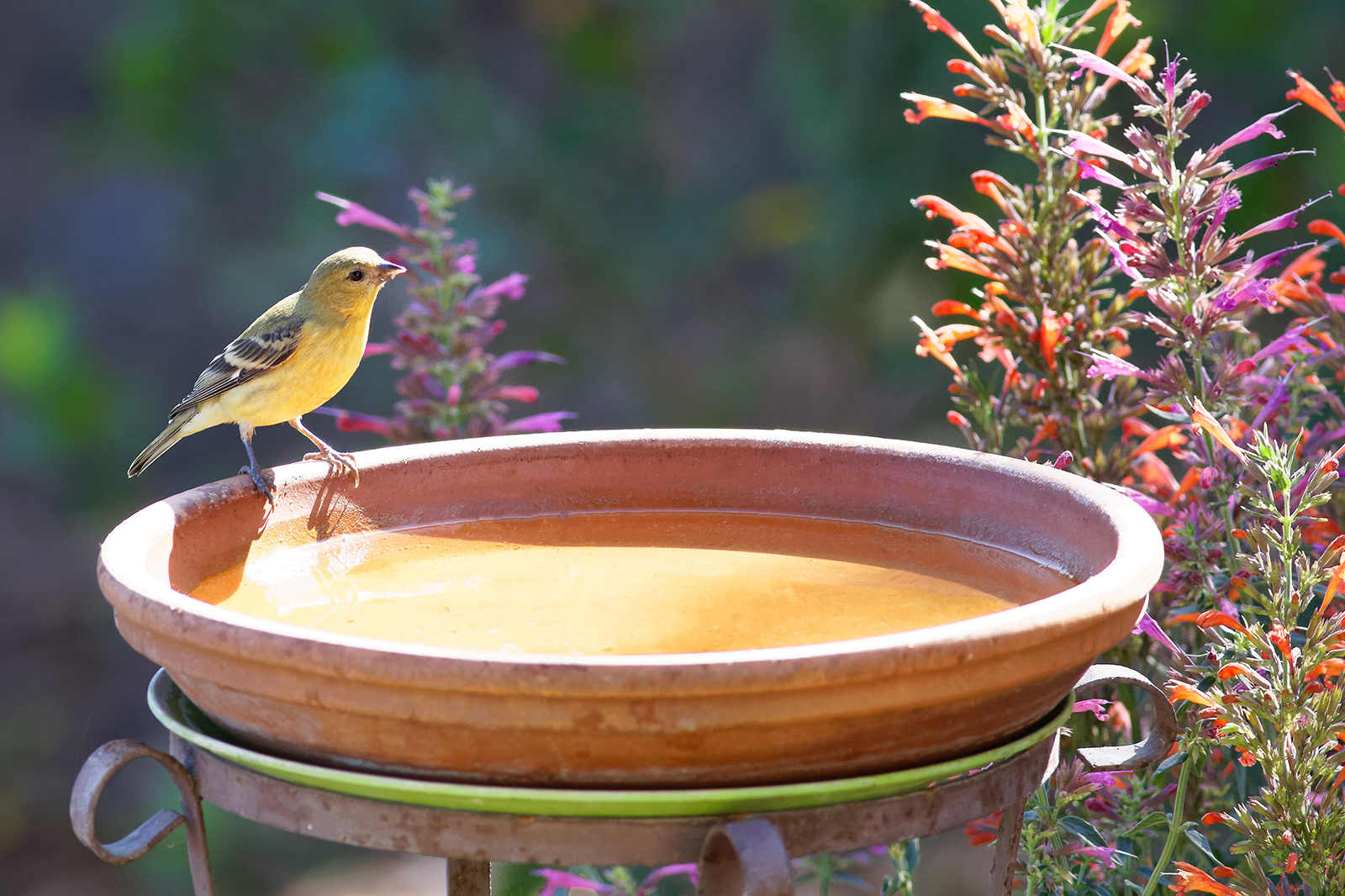
On a hot summer day, a bird bath can be a popular attraction for neighboring feathered friends. Birds love a cool drink and a quick swim!
Aside from satisfying their thirst, water helps birds keep cool and clean. You’ll often see birds preening themselves after a bath to get rid of dust, bugs and loose feathers.
There are several different types of bird baths you can place in your yard. Whichever you choose, carefully consider its placement, both for the birds’ sake and yours. You’ll want to put it somewhere the birds can bathe safely, but you’ll also want it near a water source to make it easier to fill and clean regularly.
Pedestals
A pedestal bird bath typically consists of two parts: a shallow bowl and a raised stand that lifts the bowl two to three feet off the ground. The two-piece design makes it easier to remove the bowl for cleaning between fillings.
Be sure to choose the right material for your pedestal bird bath. Heavier versions made out of ceramic or stone, rather than plastic, are less likely to be tipped over by strong winds or thirsty squirrels.
Bowls
Suspended with chains or set on the ground, bird bath bowls can be put in places where a bird bath pedestal would be impractical, such as a deck or second floor balcony. Also, some bowls can be mounted to a deck rail, rather than hung.
Because hanging bowls are typically small and lightweight, they are best for smaller birds. Larger, heavier birds that sit for a sip may just end up tipping out the water. But if you have limited yard space and want to watch birds up close, a bowl hung from the porch eaves or a garden pole is a good choice.
Bowls placed on the ground enable birds to hop in and out of the bath. A bird bath bowl is easy to move around and store. A bowl bird bath placed in a flower or rock garden will attract both small and large birds, as well as butterflies and other pollinators.
Fountains
A fountain is like a water park for birds! They will be drawn by the sounds of splashing and stay to play. The best garden fountains for birds are shallow, with a rim where they can rest in between splashes.
Moving water not only attracts the birds, it helps keep bugs at bay. Mosquitoes are less likely to lay eggs in moving water. Also, the basin in a fountain with recirculated water may not have to be cleaned as often.
Bird Houses
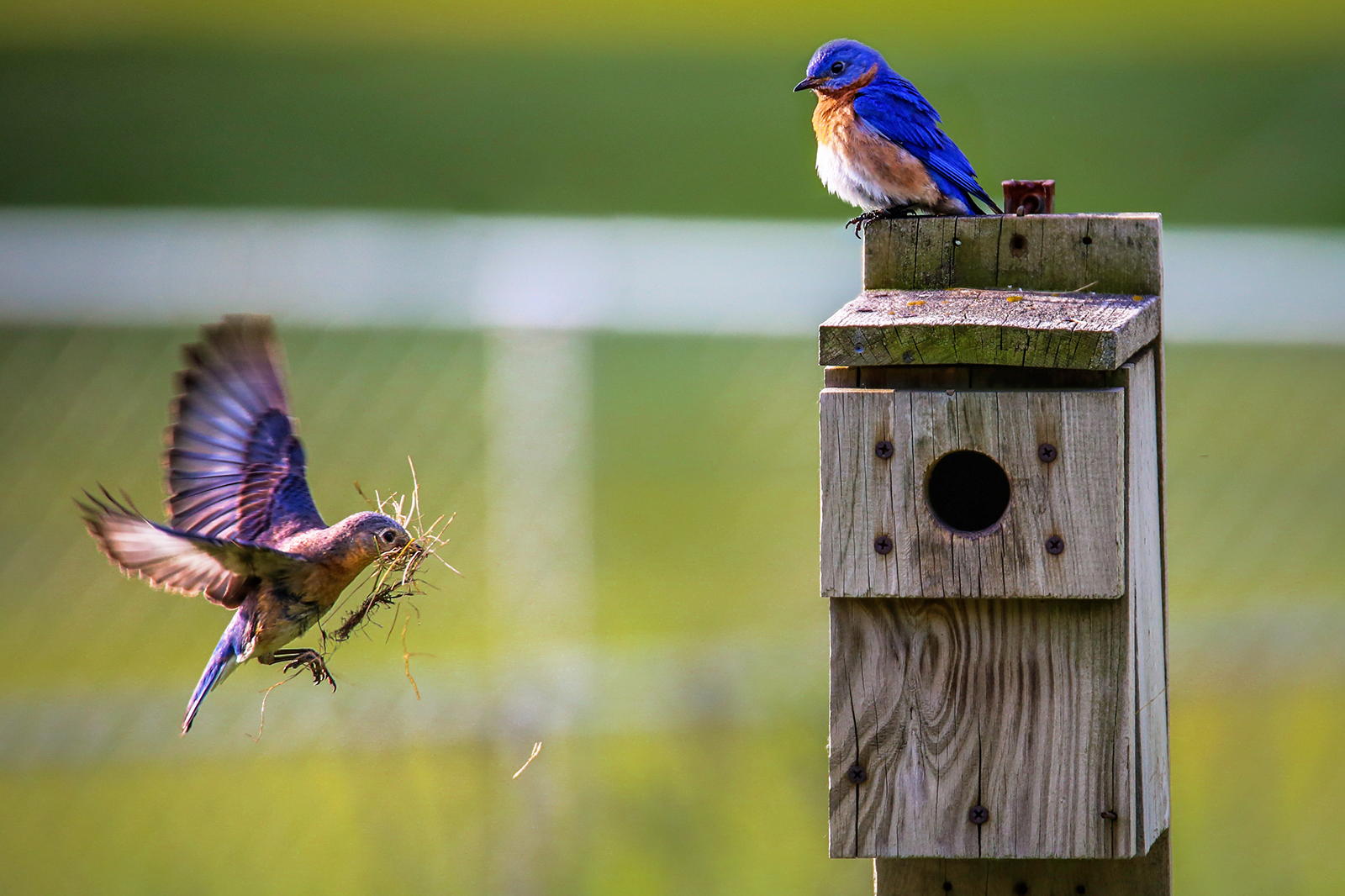
Birds don’t really need a house to sleep in, but they do appreciate a protected place for their babies to hatch and grow. For people who love watching birds, a birdhouse can be a fascinating attraction. First comes the excitement of watching a new tenant move in and “decorate” their home with bits of this and that. Later comes the anticipation of new life as mama guards her nest. Finally, the enjoyment of watching the bird parents fly busily to and fro to feed their demanding hatchlings.
You may want to do a little research before you buy a birdhouse, since the type of tenant you attract will depend on the size of the opening. The product description may give some indication of the type of birds most likely to move in.
Many birdhouses are meant more for decoration than bird habitation. If you want birds to inhabit your birdhouse, be sure it is designed for outdoor use and can withstand a range of weather conditions.
In addition, birdhouses should be cleaned out at the end of the season. That task will be easier if you buy a birdhouse that opens for easy cleaning.
Habitat
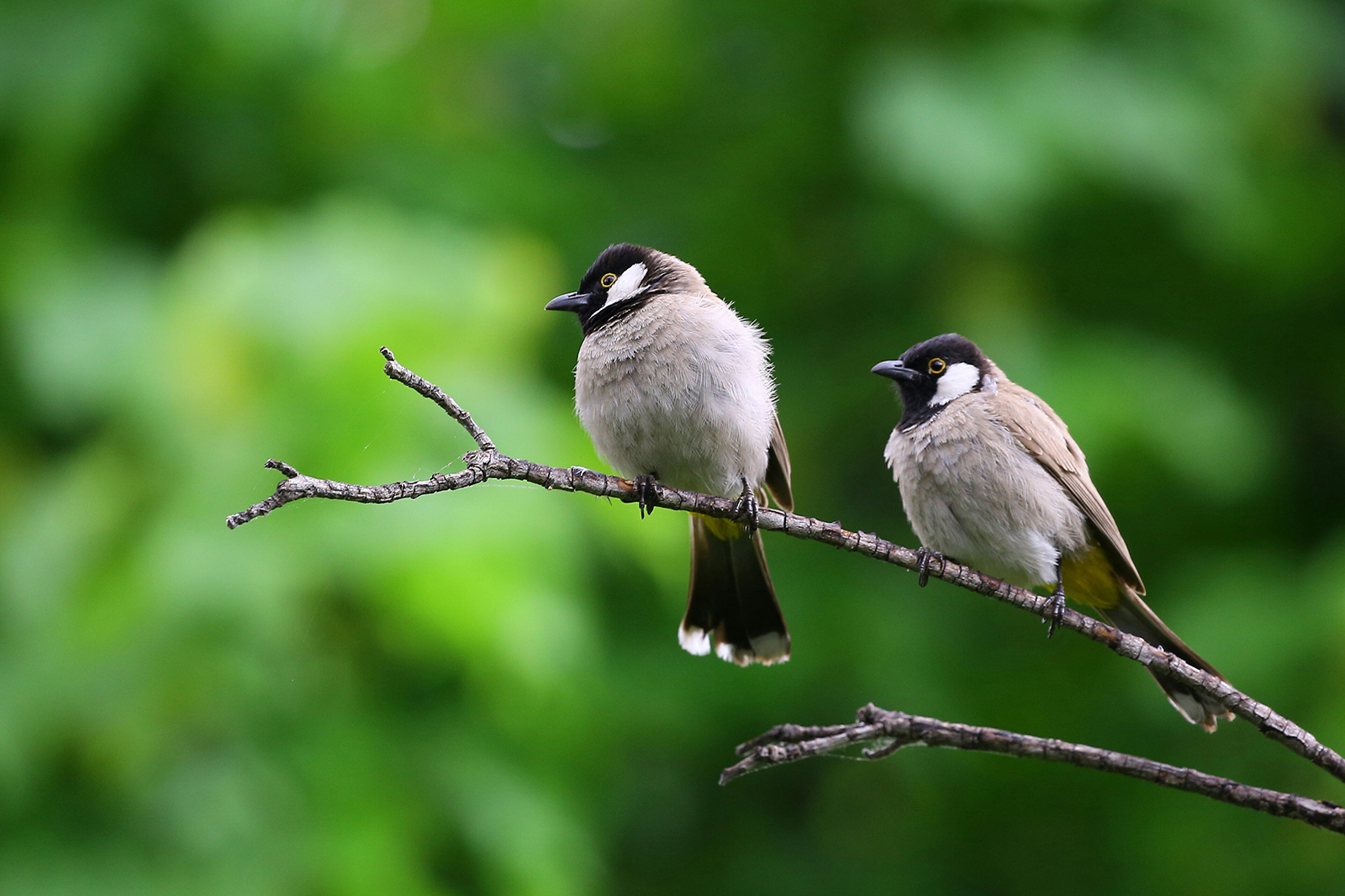
As a birdwatcher, you probably want your bird feeder, bird bath or birdhouse placed as close to your window or porch as possible, so you can enjoy the birds’ company. But what’s convenient for you isn’t always best for them.
Here are some considerations:
General Location
Put bird baths and birdhouses where they can receive some shade, especially during the hottest part of the day. Shade keeps the water cooler, minimizing algae growth.
As for birdhouses, just imagine how hot that tiny little shelter might get in direct sunlight on a sizzling summer day. You don’t want your tenant’s babies to suffer needlessly, do you?
Traditional bird feeders can be placed in the sun or shade. Hummingbird feeders, however, are better off in the shade, where the sugar water won’t spoil as quickly.
Birds startle easily. Try to keep your feeder far enough away from your house that fleeing birds won’t hurtle into your window glass. Conversely, place window feeders three feet or closer to a window. At this distance, a bird won’t fly into your window at top speed.
Protection from Predators
Feeders should be placed close to natural areas where birds can shelter, but far enough away that predators - including outdoor cats – can’t leap down on them from above. One solution is to hang your feeder on a metal pole about 10 feet away from trees and bushes. Squirrel baffles offer additional protection against both predators and seed moochers.
Natural Habitat
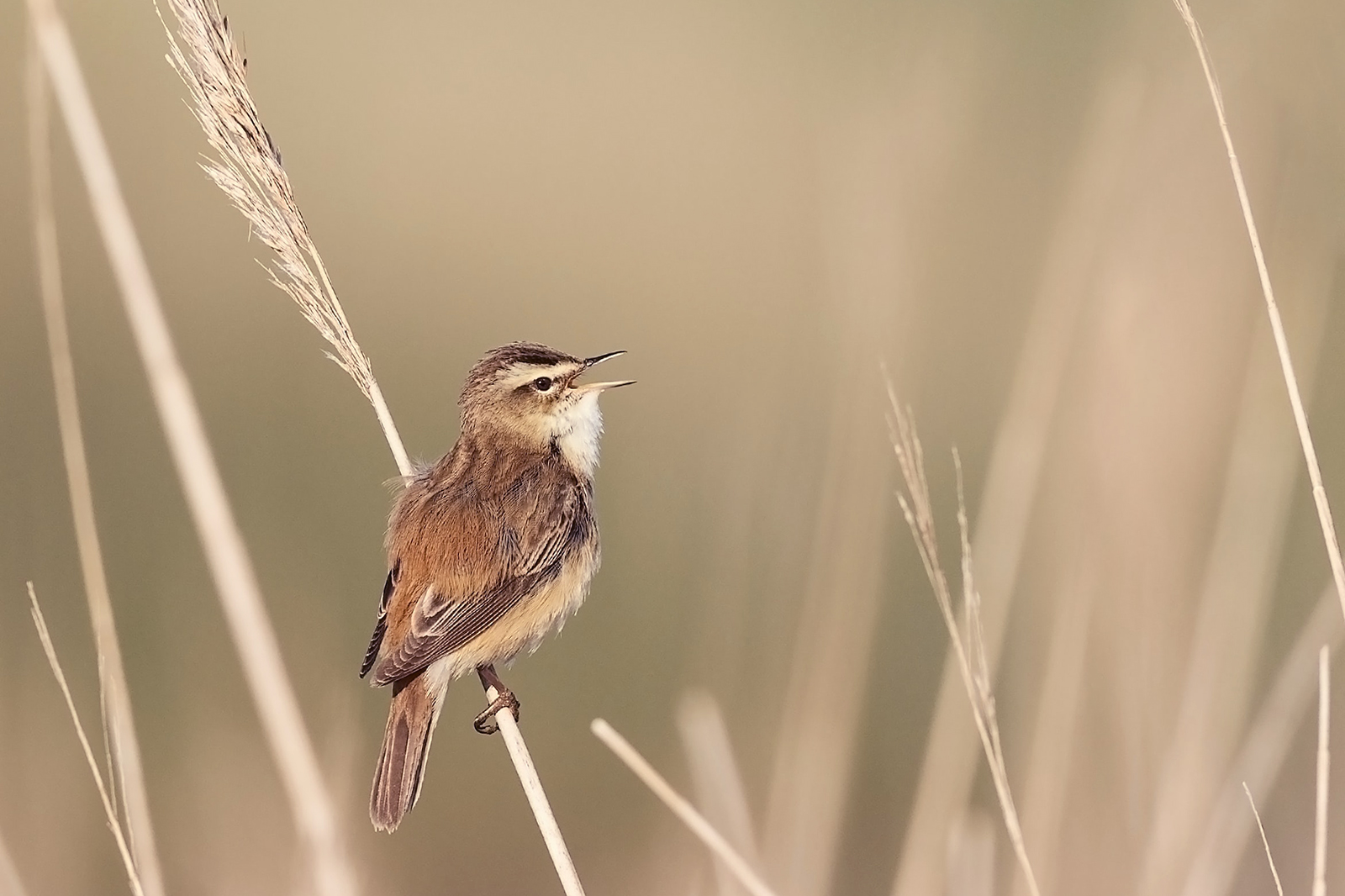
Consider the type of natural cover the birds you want to attract might prefer. Small birds are comfortable in brush, grasses and bushes, while larger birds may prefer pine or deciduous trees.
It’s helpful to offer birds some year-round natural food choices, in addition to bird seed. Consider planting bushes with berries and flowers with seeds that birds like to eat. Crabapple and dogwood trees also produce fruit that birds like, and the bugs visiting larger trees attract insect-eating birds.
Creating a more welcoming bird habitat means more vegetation and less lawn. So go ahead - expand your garden and reduce your mowing time! Use native plants, whenever possible and remove invasive plants, advises the National Wildlife Federation.
Bird feeders, bird baths and birdhouses are all excellent ways to encourage a variety of feathered friends to visit your yard.
In addition, a diverse landscape featuring a range of food choices helps supplement your efforts to attract the widest range of birds for your birdwatching pleasure.
You may also like:

Need help with decorating tips? Choosing the right tree?
Christmas Central Resources